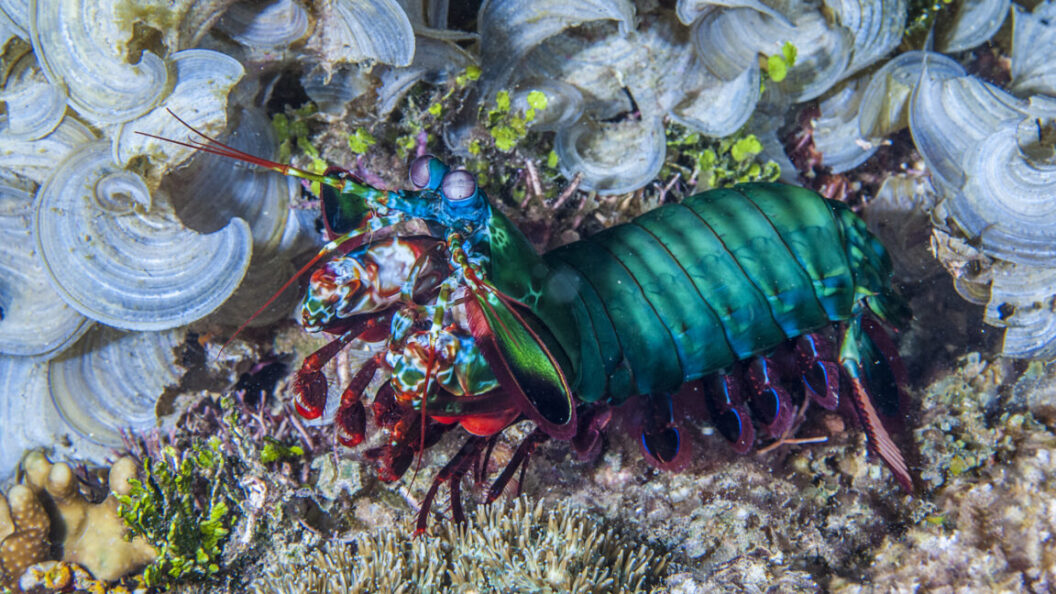Mantis Shrimp’s Defense Mechanism Offers Insights for Future Technology
Introduction
Recent research has unveiled new insights into the remarkable defensive capabilities of the mantis shrimp, specifically focusing on its dactyl clubs—specialized appendages used for striking prey. The findings could pave the way for advancements in protective technologies, including military and sports gear.
Study Overview
To quantify the strength of the mantis shrimp’s dactyl clubs, researchers conducted a series of experiments involving live specimens. By utilizing a piezoelectric sensor, they replicated the striking motion the shrimp employs to break shells. In addition, they tested the dactyl clubs under ultrasonic and hypersonic laser conditions to assess how these structures interacted with sound waves.
The research team tracked the propagation of sound waves across the surface of the dactyl clubs. They discovered that the impact surface, constituting the second layer of the club, demonstrated the highest capacity to diffuse sound waves and withstand stress. The clubs’ unique design, featuring a periodic surface layer, further enhanced their ability to endure significant impact without damage.
Unique Comparison to Other Species
Few biological structures rival those found in mantis shrimp concerning their protective capabilities. Interestingly, some moths’ wing scales serve a similar defensive purpose; they absorb sound waves emitted by hunting bats, rendering the moths less detectable by echolocation. This similarity underscores the fascinating ways evolution has equipped various species to survive in their respective environments.
Implications for Technology
The discoveries surrounding mantis shrimp and their dactyl clubs extend beyond biological curiosity—they present a potential blueprint for developing advanced protective technologies. The unique structural properties of these clubs could inspire innovations in military and athletic gear aimed at minimizing injuries from impacts.
The research highlights that "shrimp impacts contain frequencies in the ultrasonic range," suggesting that mimicking the shrimp’s protective mechanisms could lead to effective ultrasonic filtering in new materials. The implications of this discovery are profound, hinting at future designs of protective equipment influenced by a creature that measures just seven inches in length yet exhibits extraordinary resilience under pressure.
Looking Ahead
The study showcases the intricate relationship between biological structures and material science, emphasizing how natural systems can inform engineering and technology design. As researchers continue to explore the mantis shrimp’s unique adaptations, there is potential for groundbreaking advancements in how we create resistant and durable materials.
In conclusion, this research not only deepens our understanding of mantis shrimp’s extraordinary defense mechanisms but also opens doors to innovative applications in protective technology, with the potential to enhance safety in various fields. The ingenuity of nature continues to inspire human innovation, demonstrating that even the smallest of creatures can yield significant lessons for our technological future.









